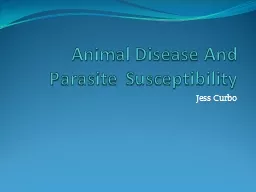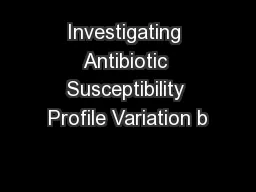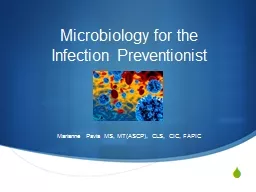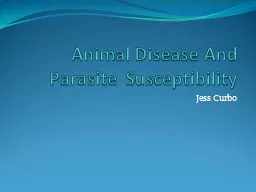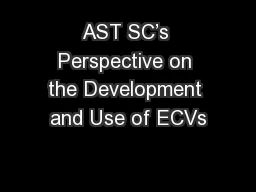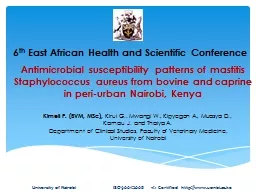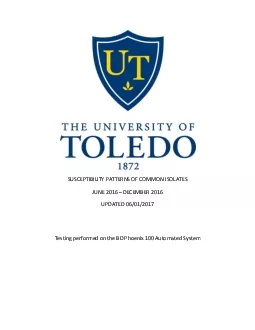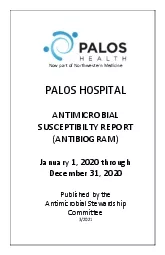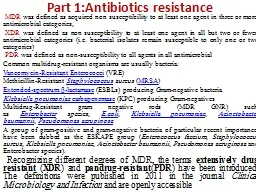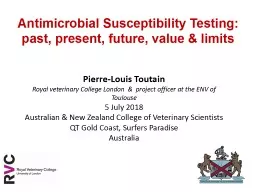PPT-European Committee on Antimicrobial Susceptibility Testing. Breakpoint tables for interpretation
Author : boyplay | Published Date : 2020-11-06
http wwweucastorg Chalhoub et al J Antimicrob Chemother 2015 May705 15968 https wwwallergancomassetspdfavycazpi 2016 AVYCAZ Zavicefta EPAR EMA
Presentation Embed Code
Download Presentation
Download Presentation The PPT/PDF document "European Committee on Antimicrobial Sus..." is the property of its rightful owner. Permission is granted to download and print the materials on this website for personal, non-commercial use only, and to display it on your personal computer provided you do not modify the materials and that you retain all copyright notices contained in the materials. By downloading content from our website, you accept the terms of this agreement.
European Committee on Antimicrobial Susceptibility Testing. Breakpoint tables for interpretation: Transcript
Download Rules Of Document
"European Committee on Antimicrobial Susceptibility Testing. Breakpoint tables for interpretation"The content belongs to its owner. You may download and print it for personal use, without modification, and keep all copyright notices. By downloading, you agree to these terms.
Related Documents


